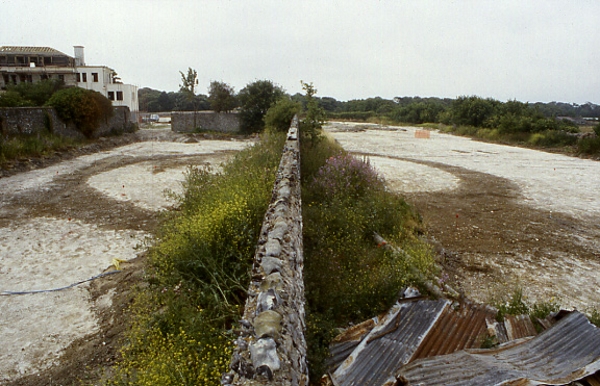
The image for Day 285 of the VM_365 project shows one of the three ring ditches that were excavated in 1999 at the St Stephens College site, at North Foreland, Broadstairs. The cropmarks extending along the valley side (to the right of this image) were shown on Day 283 and an overview of another of the barrows, an Iron Age enclosure and storage pits (located in the area at the top of this picture) were shown on Day 284 of the VM_365 project.
Two sections of this ring ditch, which are assumed to be a continuous circuit, were exposed on either side of a standing flint wall, which is part of an early 19th century Grade II listed structure and was left in place. No internal graves were found which could confirm that the ring ditch was a round barrow, but as the central part of the feature was obscured by the wall and an unexcavated area either side of it, a central grave could perhaps exist there.
The ring ditch measured 21m in diameter was formed of a series of fairly straight cuts, each roughly 2.5m in length, which intersected at acute angles to form a ring. The profile of the ditch was fairly consistent measuring 0.74 metres deep with steep, approximately 60° edges and a flat base. The fills of the ditch did not indicate any bias in the direction of filling to suggest the presence or composition of a central mound enclosed by the ditch.
Pottery of Early Iron Age date was found in the uppermost fills of the ditch, which were presumably incorporated when the ring ditch was almost entirely filled and the major Iron Age settlement was established to the south in the early 6th century BC, replacing the Bronze Age pattern of landscape use for funerary monuments with a hill top village.